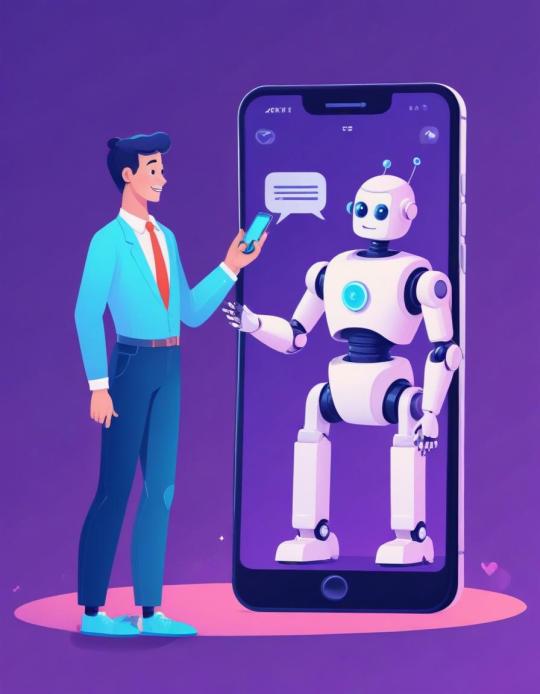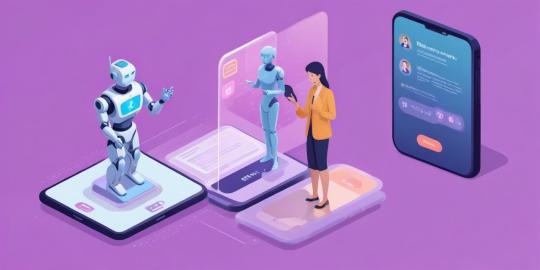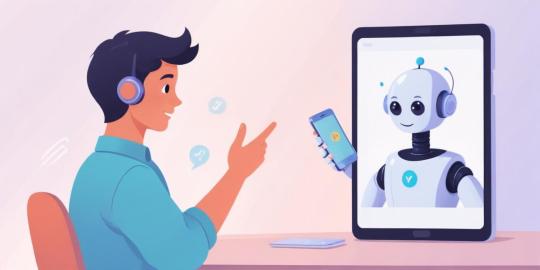#HumanInterpreters
Explore tagged Tumblr posts
Text
The Future of Simultaneous Interpreting Services: AI vs. Human Interpreters

The landscape of simultaneous interpreting services is undergoing a significant transformation, driven by advancements in artificial intelligence (AI). Recently, a Tokyo-based public research institute under the Internal Affairs and Communications Ministry developed an AI capable of simultaneous interpretation with a natural conversational flow. Created by the National Institute of Information and Communications Technology (NICT), this AI is set to be deployed at the 2025 Osaka-Kansai Expo and is expected to be used in international negotiations by 2030. But how does AI stack up against human interpreters in this critical field? This article explores the comparison between AI and human interpreters, focusing on accuracy, tone and nuance, potential displacement of human interpreters, and the future trends of the industry.
Accuracy: The Core of Interpretation
Accuracy is very important in simultaneous interpretation, where the goal is to convey a speaker’s message with as little distortion as possible. Human interpreters have long been the gold standard, drawing upon their deep understanding of language, culture, and context to deliver precise translations. However, even the best interpreters can struggle under the immense pressure of real-time translation, occasionally leading to minor inaccuracies or omissions.
AI interpreters, on the other hand, benefit from vast databases of linguistic data and specialized glossaries, enabling them to deliver highly accurate translations. The AI developed by NICT, for example, was trained with the assistance of seasoned interpreters and can perform bidirectional interpretation in multiple languages, including Japanese, English, Chinese, Korean, and French. However, AI’s accuracy can still be limited by its programming, especially in complex or ambiguous contexts where cultural knowledge and human intuition are essential.
Tone and Nuance: The Human Element
One of the most significant challenges for AI in simultaneous interpreting is capturing the subtlety of tone and nuance. Human interpreters excel in this area, as they can understand the emotional undertones and cultural context behind words, adjusting their interpretation to reflect the speaker's intent accurately. This ability is crucial in diplomatic or high-stakes negotiations, where a slight misinterpretation could lead to misunderstandings or conflict.
AI, despite its advancements, still struggles to consistently interpret tone and nuance correctly. While it can recognize and replicate certain speech patterns, it often lacks the cultural and emotional intelligence that human interpreters bring to the table. For now, this remains a critical limitation of AI in the field of simultaneous interpretation.
Will AI Replace Human Interpreters Entirely?

The question of whether AI will eventually replace human interpreters is a topic of ongoing debate. AI’s rapid development suggests that it could handle a growing number of interpreting tasks, particularly in environments where speed and efficiency are prioritized over nuanced communication. In settings like large conferences or routine business meetings, AI interpreters may become the preferred choice due to their ability to process information quickly and consistently.
However, in situations where the stakes are high, and the need for cultural sensitivity is paramount, human interpreters are likely to remain indispensable. The subtle art of interpreting goes beyond word-for-word translation, requiring a deep understanding of context, tone, and intent—qualities that AI has yet to master fully.
Adapting to the Future: How Human Interpreters Can Thrive
As AI continues to evolve, human interpreters will need to adapt to maintain their relevance in the industry. This could involve working alongside AI to handle the more routine aspects of interpretation while focusing on the areas where human expertise is most needed. Interpreters may also need to develop specialized skills in interpreting complex and culturally sensitive material, positioning themselves as experts in areas where AI still falls short.
Moreover, ongoing professional development will be crucial. By staying up-to-date with technological advancements and continuously refining their linguistic and cultural knowledge, human interpreters can ensure they remain competitive in a rapidly changing field.
The Pros and Cons of AI in Simultaneous Interpreting
Pros:
Efficiency: AI can process and translate information quickly, making it ideal for fast-paced environments.
Consistency: AI provides consistent translations, free from the fatigue or stress that can affect human interpreters.
Scalability: AI can be deployed across multiple languages and regions simultaneously, offering broad accessibility.
Cons:
Lack of Cultural Sensitivity: AI often struggles with the nuanced understanding of cultural context and emotional tone.
Dependence on Data: AI's accuracy is heavily reliant on the quality and scope of its training data, which may not cover all linguistic subtleties.
Limited Adaptability: AI can struggle in unpredictable or highly complex situations where human intuition is required.

Future Trends: The Path Ahead
Looking ahead, the future of simultaneous interpreting services is likely to be a hybrid model where AI and human interpreters work together. AI will handle the bulk of straightforward translations, while human interpreters will be called upon for more intricate tasks that require a deep understanding of cultural context and emotional nuance. This collaboration could lead to more efficient and accurate interpretation services overall, combining the strengths of both AI and human expertise.
Additionally, as AI technology continues to improve, we may see the development of more sophisticated systems capable of better understanding and replicating human-like interpretation. This could further blur the lines between AI and human interpreters, creating a dynamic and evolving industry.
In conclusion, while AI is poised to play an increasingly important role in simultaneous interpreting services, human interpreters are far from obsolete. By embracing the opportunities presented by AI and focusing on areas where human skills are irreplaceable, interpreters can continue to thrive in a rapidly changing world.
#SimultaneousInterpreting#AIInterpreters#HumanInterpreters#InterpretingServices#AIvsHuman#TranslationTechnology#InterpretationAccuracy#LanguageServices#FutureOfInterpreting#AIInTranslation#CulturalSensitivity#MachineLearning#InterpreterSkills#LanguageAI#GlobalCommunication#AIInnovation#TechInLanguage#InterpreterLife#ConferenceInterpreting#MultilingualAI#TechAndHumanCollaboration#InterpretingFuture#AITranslation#NuanceInInterpreting#AIInConferences
0 notes